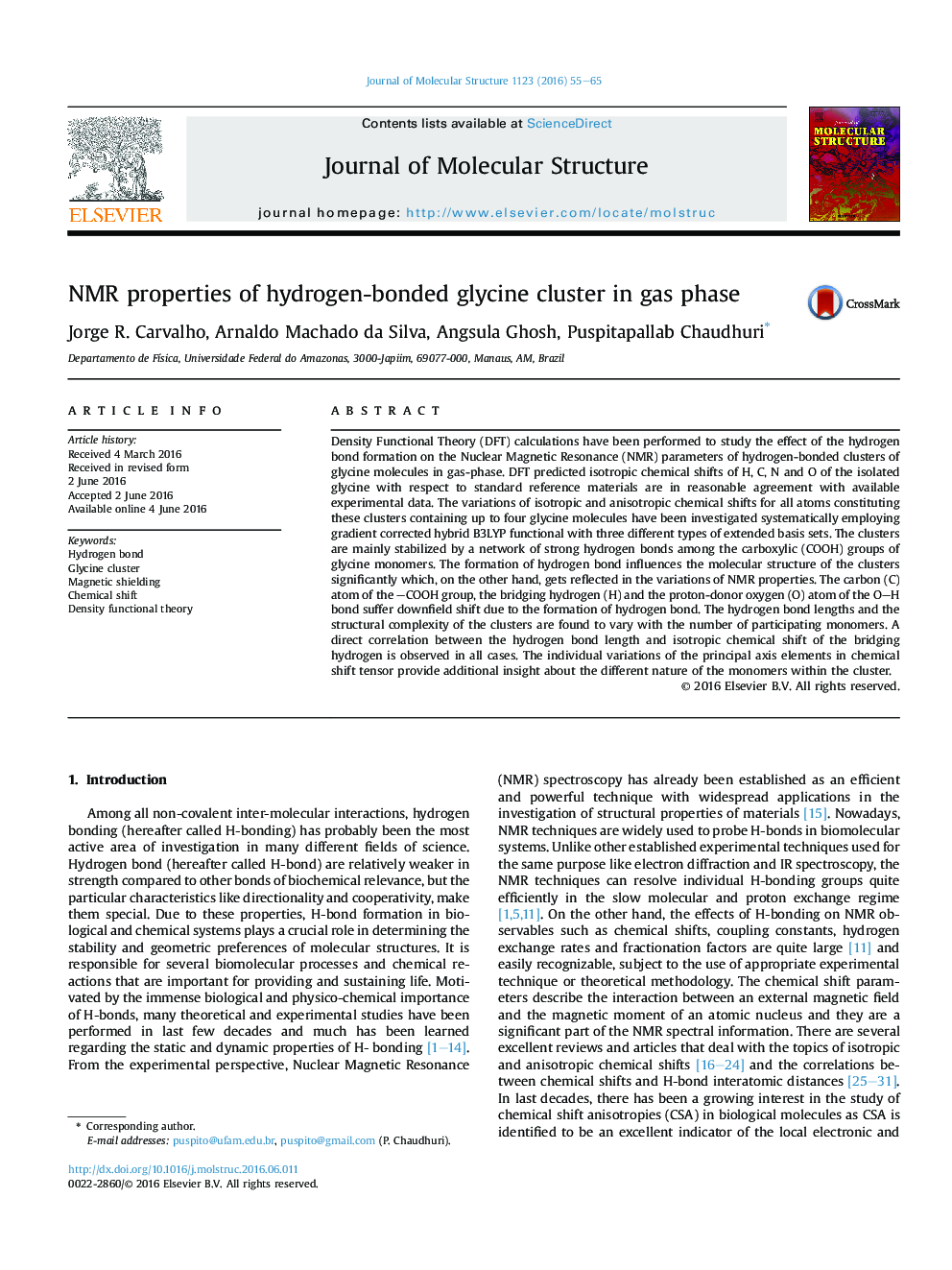| Article ID | Journal | Published Year | Pages | File Type |
|---|---|---|---|---|
| 1404714 | Journal of Molecular Structure | 2016 | 11 Pages |
•Effect of hydrogen bond formation on the NMR parameters of glycine cluster is studied in gas-phase.•Chemical shift of the hydrogen in OH⋯O and NH⋯N hydrogen bonds increases upon complexation.•Anisotropic chemical shift is more sensitive to hydrogen bond formation than isotropic one.
Density Functional Theory (DFT) calculations have been performed to study the effect of the hydrogen bond formation on the Nuclear Magnetic Resonance (NMR) parameters of hydrogen-bonded clusters of glycine molecules in gas-phase. DFT predicted isotropic chemical shifts of H, C, N and O of the isolated glycine with respect to standard reference materials are in reasonable agreement with available experimental data. The variations of isotropic and anisotropic chemical shifts for all atoms constituting these clusters containing up to four glycine molecules have been investigated systematically employing gradient corrected hybrid B3LYP functional with three different types of extended basis sets. The clusters are mainly stabilized by a network of strong hydrogen bonds among the carboxylic (COOH) groups of glycine monomers. The formation of hydrogen bond influences the molecular structure of the clusters significantly which, on the other hand, gets reflected in the variations of NMR properties. The carbon (C) atom of the COOH group, the bridging hydrogen (H) and the proton-donor oxygen (O) atom of the OH bond suffer downfield shift due to the formation of hydrogen bond. The hydrogen bond lengths and the structural complexity of the clusters are found to vary with the number of participating monomers. A direct correlation between the hydrogen bond length and isotropic chemical shift of the bridging hydrogen is observed in all cases. The individual variations of the principal axis elements in chemical shift tensor provide additional insight about the different nature of the monomers within the cluster.
